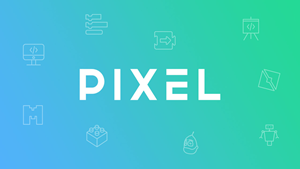The Digital Playground: Teaching Programming to Young Minds
October 23, 2024, 4:12 am
In today's world, technology is the air we breathe. Children are not just passive consumers; they are becoming creators. The question is, when should they start learning to code? The answer is simple: as early as possible. The age of 7 or 8 is the sweet spot. At this age, kids are curious, eager to explore, and ready to grasp the basics of programming. It’s like planting a seed in fertile soil. With the right nurturing, it can grow into a mighty tree.
The journey into programming can begin with visual programming languages like Scratch and Scratch Jr. These platforms are like digital Lego blocks. They allow children to build their own games and animations without the complexities of traditional coding. The vibrant colors and interactive elements capture their attention, making learning feel like play.
Scratch is designed for kids aged 8 and up. It introduces them to fundamental programming concepts through a user-friendly interface. Kids can create stories, games, and animations by snapping together blocks that represent different commands. This method teaches them to think logically and creatively. It’s a gentle introduction to the world of coding, where mistakes are just stepping stones to success.
For younger children, Scratch Jr is a perfect starting point. It simplifies the coding experience, making it accessible even to those who can’t read yet. The focus is on storytelling and creativity, allowing kids to express themselves while learning the basics of programming. This early exposure lays the groundwork for more complex concepts later on.
As children progress, they can explore tools like TinkerCAD. This platform introduces them to 3D modeling and design. It’s like giving them a digital canvas where they can create anything from simple shapes to intricate designs. TinkerCAD fosters spatial awareness and creativity, skills that are invaluable in today’s tech-driven world.
Minecraft Education Edition is another exciting avenue for young learners. It combines gaming with coding through its Code Builder feature. Kids can manipulate their Minecraft world using block-based programming. This not only makes coding fun but also contextualizes it within a game they already love. It’s a powerful way to engage students, turning coding into an adventure rather than a chore.
For those ready to take a leap into text-based programming, Python is an excellent choice. While it may seem daunting, Python is one of the most accessible programming languages for beginners. Its syntax is straightforward, making it easier for kids to understand. Pairing Python with Minecraft allows children to create mods, enhancing their gaming experience while deepening their coding skills. It’s like giving them the keys to unlock new levels in their favorite game.
Lua, used in Roblox, is another language that captivates young minds. Roblox Studio allows kids to create their own games, providing a platform for creativity and technical skill development. Learning Lua is not just about coding; it’s about bringing their imaginative worlds to life. This dual focus on creativity and technicality makes it a compelling choice for budding programmers.
The benefits of teaching programming to children extend beyond the screen. Coding enhances problem-solving skills, logical thinking, and creativity. It encourages perseverance; when a program doesn’t work, kids learn to troubleshoot and find solutions. These skills are transferable to all areas of life, making coding a valuable addition to any child’s education.
Moreover, programming fosters collaboration. Many coding projects require teamwork, teaching children how to communicate effectively and work towards a common goal. In a world that increasingly values collaboration, these skills are essential.
Parents often wonder if coding is necessary for their children. The answer is a resounding yes. In the 21st century, coding is becoming a second literacy. It’s not just for future programmers; it’s a skill that enhances critical thinking and creativity. Whether a child becomes a software engineer or a graphic designer, understanding the basics of coding will serve them well.
The key is to start early and keep it fun. Learning should never feel like a chore. By integrating play into the learning process, children are more likely to stay engaged and curious. The tools available today make it easier than ever to introduce programming concepts in a playful, interactive way.
In conclusion, the digital landscape is vast and full of opportunities. Teaching programming to children aged 7 to 9 is not just beneficial; it’s essential. It equips them with the skills they need to navigate the future. With platforms like Scratch, TinkerCAD, Minecraft, and Roblox, the possibilities are endless.
As we prepare the next generation for a tech-driven world, let’s ensure they have the tools to not just consume technology but to create it. After all, in the digital playground, every child can be a builder, a creator, and a coder. The future is bright, and it starts with a single line of code.
The journey into programming can begin with visual programming languages like Scratch and Scratch Jr. These platforms are like digital Lego blocks. They allow children to build their own games and animations without the complexities of traditional coding. The vibrant colors and interactive elements capture their attention, making learning feel like play.
Scratch is designed for kids aged 8 and up. It introduces them to fundamental programming concepts through a user-friendly interface. Kids can create stories, games, and animations by snapping together blocks that represent different commands. This method teaches them to think logically and creatively. It’s a gentle introduction to the world of coding, where mistakes are just stepping stones to success.
For younger children, Scratch Jr is a perfect starting point. It simplifies the coding experience, making it accessible even to those who can’t read yet. The focus is on storytelling and creativity, allowing kids to express themselves while learning the basics of programming. This early exposure lays the groundwork for more complex concepts later on.
As children progress, they can explore tools like TinkerCAD. This platform introduces them to 3D modeling and design. It’s like giving them a digital canvas where they can create anything from simple shapes to intricate designs. TinkerCAD fosters spatial awareness and creativity, skills that are invaluable in today’s tech-driven world.
Minecraft Education Edition is another exciting avenue for young learners. It combines gaming with coding through its Code Builder feature. Kids can manipulate their Minecraft world using block-based programming. This not only makes coding fun but also contextualizes it within a game they already love. It’s a powerful way to engage students, turning coding into an adventure rather than a chore.
For those ready to take a leap into text-based programming, Python is an excellent choice. While it may seem daunting, Python is one of the most accessible programming languages for beginners. Its syntax is straightforward, making it easier for kids to understand. Pairing Python with Minecraft allows children to create mods, enhancing their gaming experience while deepening their coding skills. It’s like giving them the keys to unlock new levels in their favorite game.
Lua, used in Roblox, is another language that captivates young minds. Roblox Studio allows kids to create their own games, providing a platform for creativity and technical skill development. Learning Lua is not just about coding; it’s about bringing their imaginative worlds to life. This dual focus on creativity and technicality makes it a compelling choice for budding programmers.
The benefits of teaching programming to children extend beyond the screen. Coding enhances problem-solving skills, logical thinking, and creativity. It encourages perseverance; when a program doesn’t work, kids learn to troubleshoot and find solutions. These skills are transferable to all areas of life, making coding a valuable addition to any child’s education.
Moreover, programming fosters collaboration. Many coding projects require teamwork, teaching children how to communicate effectively and work towards a common goal. In a world that increasingly values collaboration, these skills are essential.
Parents often wonder if coding is necessary for their children. The answer is a resounding yes. In the 21st century, coding is becoming a second literacy. It’s not just for future programmers; it’s a skill that enhances critical thinking and creativity. Whether a child becomes a software engineer or a graphic designer, understanding the basics of coding will serve them well.
The key is to start early and keep it fun. Learning should never feel like a chore. By integrating play into the learning process, children are more likely to stay engaged and curious. The tools available today make it easier than ever to introduce programming concepts in a playful, interactive way.
In conclusion, the digital landscape is vast and full of opportunities. Teaching programming to children aged 7 to 9 is not just beneficial; it’s essential. It equips them with the skills they need to navigate the future. With platforms like Scratch, TinkerCAD, Minecraft, and Roblox, the possibilities are endless.
As we prepare the next generation for a tech-driven world, let’s ensure they have the tools to not just consume technology but to create it. After all, in the digital playground, every child can be a builder, a creator, and a coder. The future is bright, and it starts with a single line of code.

